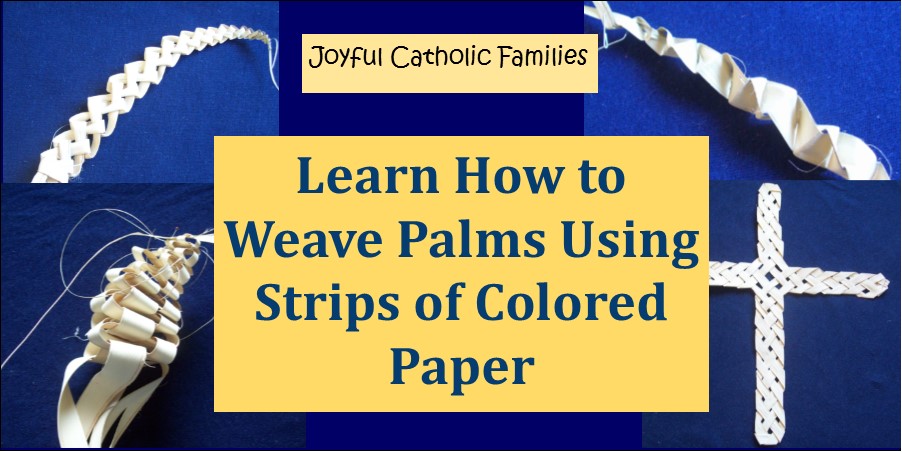
Growing up we had a picture that had LOTS of woven palms tucked behind the top of the frame. And, now, I have two pictures in our home that has palms peeking over the top. The palms add beauty AND they remind us of a particular Sunday in our liturgical year — Palm Sunday.
Palm weaving is a FUN thing that Catholics do — at least that we used to do. It seems to be a dying art. But it doesn’t have to be that way. You and your children or your class can learn how to weave palms.
When I first thought about teaching a class how to weave palms, it sounded so overwhelming. So many people would need help at one time. I wondered how I could make it easier to learn. How could I explain which piece of palm needed to be moved where? I needed a way to designate each of the pieces of palm. That is when I thought of using strips of different colors of paper. And it worked! I can say which piece of palm (paper) to move and they know exactly what I am talking about. The pictures of each step are very helpful for those who are more visual learners.
How to prepare the palms for weaving:
Once you learn how to make the palm weavings with colored paper, you’ll want to try them with palms.
Palms dry quickly so you need to use them as soon as you get home from Mass on Palm Sunday.
- Or you can refrigerate the palms in a plastic bag with a moist cloth added. Be careful that there is not too much moisture or they will mold. They can be kept in the refrigerator for weeks like this.
- Or you can freeze the palms. Yes, you can freeze palms. I have had some in my freezer for years and every so often I pull one out to use and they are still usable. To freeze, put them in 2 or 3 freezer bags that are tightly sealed.
Palms have a heavy rib down one side. Cut or tear it off.
The palm leaves can be split to make more pieces to weave. For example, the palms we receive often have only two leaves. You can do a weaving that requires 4 leaves by splitting the two leaves in half.
For some weavings you need to use scissors and cut the palms to the desired size.
Remember: the palms have been blessed. Do not let them fall on the floor. Burn or bury any leftover palm pieces. Do not throw out in your trash or garbage.
And now it is time to learn how to weave palms. Click on a picture to begin.







Leave a Reply